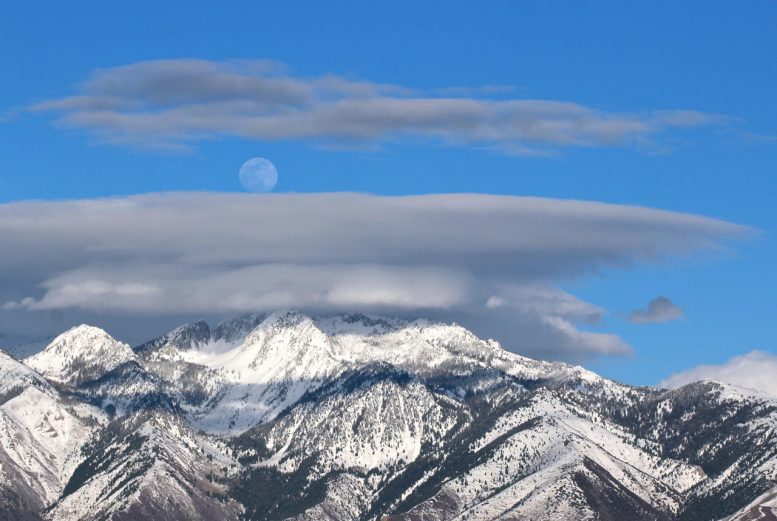
The next full Moon is the Cold Moon, Frost Moon, Winter Moon, Beaver Moon, Oak Moon, Moon Before Yule, Child Moon, Kartik Purnima, Karthika Deepam and Tazaungdaing Festival Moon, and Ill Poya.
The next full Moon will be early on Monday morning, November 30, 2020, appearing opposite the Sun (in Earth-based longitude) at 4:30 AM EST. The Moon will appear full for about three days around this time, from Saturday night through Tuesday morning. The Moon will be close enough to opposite the Sun that it will pass through the partial shadow of the Earth, with 83 percent of the Moon in the partial shadow at 4:44 AM, the peak of the eclipse. The dimming of the Moon during this eclipse will probably not be noticeable without instrumentation, but for spacecraft at the Moon such as the Lunar Reconnaissance Orbiter (LRO) the reduction in solar power will be noticeable.
In the 1930’s the Maine Farmer’s Almanac first published “Indian” names for the yearly full Moons tied to the European months. I think it more likely these Native American names were loosely tied to the seasons (especially if they were in use before contact with Europeans). Because most of the Earth had two full Moons in October 2020 (the newer definition of a Blue Moon), the Moon names by season and names by month will be offset until the summer of 2021, which will have four full Moons (and have a Blue Moon by the older definition). Going by season, as the last full Moon of the autumn the Algonquin tribes of what is now the northern and eastern United States called this Moon the Cold Moon, due to the long, cold nights. Other names were the Frost Moon or the Winter Moon, for the frosts as winter nears. Going by month, this would be the Beaver Moon and the full Moon after next would be the Cold Moon.
As the full Moon before the winter solstice, an old European name for this Moon is the Oak Moon, a name that some believe ties back to ancient druid traditions of harvesting mistletoe from oak trees first recorded by the Roman historian Pliny the Elder in the 1st century CE. The term “druid” may derive from the Proto-Indo-European roots for “oak” and “to see,” suggesting the term means “oak knower” or “oak seer.” Europeans also called this the Moon before Yule, a 3-day winter solstice festival. In the 10th Century King Haakon I associated Yule with Christmas as part of the Christianization of Norway, and this association spread throughout Europe. Some sources use these names for the full Moon in December, even if it occurs after Yule and the winter solstice.
When she saw the rising full Moon, she said: “You know what this Moon is called? It’s called a Child Moon. Because the Moon rises at a time that the children, they can see it, because they’re not in bed, and they might even be outside like we are right now.”
A year ago, 7-year-old Astrid Hattenbach was walking home from school with her father Henry Throop (a friend and former coworker at NASA Headquarters). When she saw the rising full Moon, she said: “You know what this Moon is called? It’s called a Child Moon. Because the Moon rises at a time that the children, they can see it, because they’re not in bed, and they might even be outside like we are right now.” Henry told me about this and I thought it a perfect name. For the Northern Hemisphere the earliest sunsets of the year are in early December. With this full Moon on November 30, the evening before, Sunday, November 29, 2020, is the earliest sunset of the year with a full Moon in the sky, making this the Child Moon!
This full Moon is Kartik Purnima, celebrated by Hindus, Jains, and Sikhs (each for different reasons). Karthika Deepam, also known as Karthikai Vilakkidu or Thrikarthika, is a festival of lights that is observed by Hindus of Tamil Nadu, Sri Lanka, and Kerala. This festival is celebrated when the nearly full Moon lines up with the Pleiades constellation (Krittika or Karttikai), and will be celebrated this year on November 29, 2020. In Myanmar the festival of lights associated with this full Moon is the Tazaungdaing Festival, a festival that predates the introduction of Buddhism. Every full Moon (Poya) is a holiday in Sri Lanka. This is the Ill (or Il) Poya, commemorating the Buddha’s ordination of sixty disciples as the first missionaries.
In lunisolar calendars the months change with the new Moon and full Moons fall in the middle of the lunar month. This full Moon is the middle of the tenth month of the Chinese calendar and Kislev in the Hebrew calendar. Hanukkah begins towards the end of Kislev and ends early in the next month, Tevet. In the Islamic calendar the months start with the first sighting of the waxing crescent Moon after the New Moon. This full Moon is near the middle of Rabi’ al-Thani, the fourth month of the Islamic year.
As usual, the wearing of suitably celebratory celestial attire is encouraged in honor of the full Moon. Stay warm, but take advantage of these early nightfalls to get out, look up, and share the wonders of the sky!
1 Comment
Thank u so much for all the info!! I def think it would be awesome to call this full Moon the child’s moon..that’s heart warming that she told her father that🖤 this article made my day!!